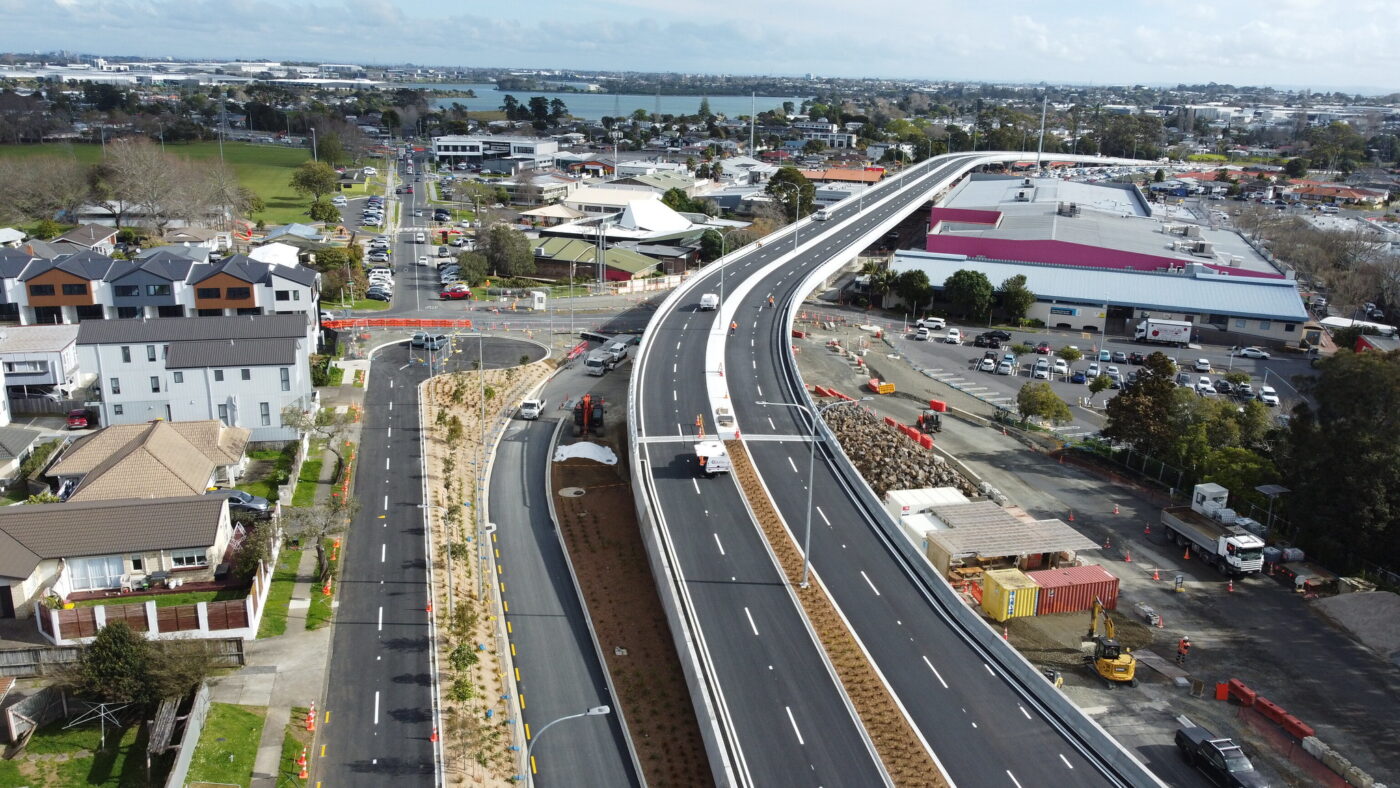Lifestyle
Auckland’s $152M Reeves Road Flyover Set to Improve Traffic Flow

The long-awaited Reeves Road Flyover, known as Rā Hihi, is set to partially open on October 1, 2024, in Pakūranga, Auckland. The project, developed by Auckland Transport (AT) in collaboration with the Eastern Busway Alliance, has cost a total of $152 million, coming in more than $4 million under budget.
Local officials, including elected representatives from both local and central governments, gathered on September 26, 2024, to celebrate the milestone. The half-opening will allow two lanes of traffic to flow away from the east, with full operation of all four lanes expected by Labour Day, October 27, 2024.
East Auckland has faced persistent transport challenges over the years, particularly as the area’s population surged since the 1990s. As more people moved into the region, traffic congestion has become a daily frustration for many residents. According to AT, the Reeves Road Flyover will serve as a crucial element of the Eastern Busway project, aimed at improving travel times and alleviating congestion on key routes.
Construction of Rā Hihi began in March 2024 and has been met with mixed reactions from the community. While AT emphasizes the long-term benefits of the flyover, local businesses in Pakūranga Plaza have reported significant disruptions due to ongoing construction. Access to the town centre and surrounding businesses has been hindered, raising concerns about the economic impact on the area.
AT has stated that the direct link between Pakūranga Road and the South-Eastern Highway will reduce traffic on Pakūranga Road and Tī Rākau Drive, especially during peak hours. Yet, many residents remain skeptical about whether the flyover will truly solve the region’s congestion issues or merely create another bottleneck.
Key Features of the Rā Hihi Flyover
The Rā Hihi structure stands out not only for its size but also for its design elements that reflect local culture. The name, which translates to “sun’s rays,” was given by the local iwi, Ngai Tai ki Tamaki.
The flyover measures 600 metres long, 18 metres wide, and 10 metres high, with 17 spans supported by 16 piers. The longest span reaches 40 metres over Tī Rākau Drive. Construction utilized 11,500 cubic metres of concrete and 2,500 tonnes of reinforcing and pre-stressing steel. Each of the foundation piles is 30 metres deep, with significant structural components including 136 Super T beams, the heaviest of which weighs 90 tonnes.
AT has integrated sustainable design elements into the flyover, including innovative stormwater management and cultural artwork, aiming to enrich the infrastructure’s connection to the local community.
As the project nears completion, the community hopes that the benefits of improved transport connections will help revitalize Pakūranga and address ongoing economic concerns. While the excitement around the upcoming opening continues to build, residents and business owners alike will be watching closely to see if the flyover delivers on its promises.
-

 World1 week ago
World1 week agoPrivate Funeral Held for Dean Field and His Three Children
-

 Top Stories2 weeks ago
Top Stories2 weeks agoFuneral Planned for Field Siblings After Tragic House Fire
-

 Sports3 months ago
Sports3 months agoNetball New Zealand Stands Down Dame Noeline Taurua for Series
-

 Entertainment3 months ago
Entertainment3 months agoTributes Pour In for Lachlan Rofe, Reality Star, Dead at 47
-

 Entertainment2 months ago
Entertainment2 months agoNew ‘Maverick’ Chaser Joins Beat the Chasers Season Finale
-

 Sports3 months ago
Sports3 months agoSilver Ferns Legend Laura Langman Criticizes Team’s Attitude
-

 Sports4 weeks ago
Sports4 weeks agoEli Katoa Rushed to Hospital After Sideline Incident During Match
-

 World2 weeks ago
World2 weeks agoInvestigation Underway in Tragic Sanson House Fire Involving Family
-

 Politics2 months ago
Politics2 months agoNetball NZ Calls for Respect Amid Dame Taurua’s Standoff
-

 Top Stories2 weeks ago
Top Stories2 weeks agoShock and Grief Follow Tragic Family Deaths in New Zealand
-

 Entertainment3 months ago
Entertainment3 months agoKhloe Kardashian Embraces Innovative Stem Cell Therapy in Mexico
-

 World4 months ago
World4 months agoPolice Arrest Multiple Individuals During Funeral for Zain Taikato-Fox



















